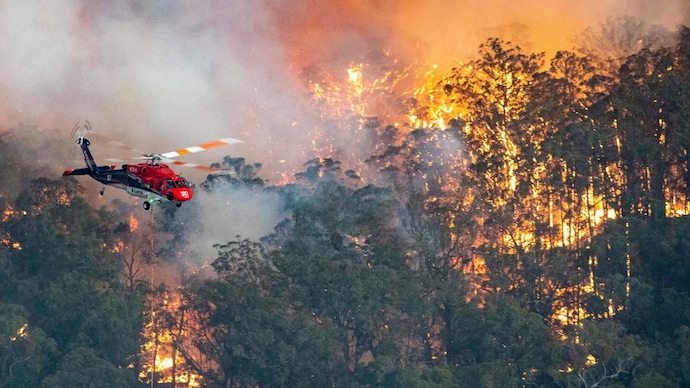Unlocking the Keys of Bushfire Threat Evaluation: The Function of a BAL Report
Unlocking the Keys of Bushfire Threat Evaluation: The Function of a BAL Report
Blog Article
How BAL Report Impacts Shrub Fire Security Measures
In the world of bush fire security, the Building Assault Degree (BAL) report stands as a critical tool that dramatically influences the security and strength of buildings in fire-prone areas - BAL Report. The effect of a BAL evaluation expands far beyond mere documentation; it acts as the cornerstone for figuring out the suitable building and construction criteria and fire defense measures needed to minimize the threats posed by bushfires. As areas face increasingly severe fire periods, understanding exactly how the BAL record forms these safety actions ends up being extremely important for house owners, policymakers, and home builders alike
Understanding the Bushfire Strike Degree

Importance of BAL Record Assessment

Moreover, the BAL record assessment offers as a fundamental action in abiding by legal responsibilities and requirements connected to bushfire security. Local councils and authorities often mandate the submission of a BAL report as component of the preparation and structure approval process to ensure that residential properties are sufficiently protected against bushfire dangers. Falling short to conduct a complete BAL record analysis can lead to insufficient defense actions, leaving properties susceptible to ravaging bushfire cases.
Building And Construction Requirements Based on BAL
A detailed understanding of the Bushfire Strike Degree (BAL) makes it possible for homeowner to carry out construction criteria tailored to their details danger profile. Construction standards based upon BAL are crucial in mitigating the influence of bushfires on homes. The BAL score classifies the potential risk a residential or commercial property encounters during a bushfire on a scale from BAL-Low to BAL-FZ (Flame Zone) Each BAL level represents specific building demands detailed in the Australian Typical AS3959-2018 Building of Buildings in Bushfire-Prone Areas. For example, properties categorized as BAL-Low may just need fundamental actions such as clearing debris and preserving gardens, while those in higher BAL useful site classifications require more robust actions like ash screens, fire-resistant products, and sealed home windows. Complying with these building and construction standards not just enhances the structural resilience of the property yet additionally improves the overall security of homeowners throughout a bushfire event. Consequently, home owners need to very carefully consider their BAL rating and conform with the corresponding construction standards to properly secure their homes and occupants.
Implementing Fire Security Steps
With the foundation of building and construction standards based on Bushfire Strike Degree (BAL) in location, the focus now shifts towards the useful execution of fire security procedures to fortify homes versus bushfire hazards. Executing fire protection steps includes a combination of passive and active methods to enhance the durability of buildings in bushfire-prone locations. Passive steps include using fireproof structure materials, setting up coal guards on vents, securing voids in roof coverings and walls, and preserving a clear room around the residential or commercial property without flammable plants. Active measures include having firefighting tools conveniently available, such as tubes and water pumps, as well as producing a defendable room around the residential property look at this now by getting rid of greenery and having a properly maintained yard. Additionally, developing an evacuation strategy and ensuring all residents are conscious of emergency situation treatments are crucial parts of effective fire protection steps. By incorporating both passive and energetic strategies, properties can considerably decrease their susceptability to bushfire events and boost the security of passengers.
Safeguarding Residences Against Bushfires
Effectively safeguarding homes versus the damaging impacts of bushfires requires a positive and detailed approach to fire security actions. House owners residing in bushfire-prone areas have to prioritize the application of different strategies to improve their residential property's resilience against wildfires. One basic element is developing a defensible area around the home by preserving a clear area without flammable products. This consists of on a regular basis cutting greenery, getting rid of dead plants, and ensuring a safe distance in between structures and trees. Mounting fireproof roofing materials can likewise substantially decrease the danger of ash strikes and straight fire contact. Furthermore, securing vents and spaces to protect against cinder invasion, along with incorporating fire-resistant windows click to investigate and doors, can help fortify the home's defense against bushfires. Investing in a trustworthy water resource, such as a well-maintained automatic sprinkler or a devoted water tank, is important for providing water during fire emergencies - BAL Report. By embracing a proactive stance and incorporating these safety measures, house owners can dramatically raise their opportunities of guarding their homes versus bushfires.
Final Thought
In verdict, the Bushfire Attack Level (BAL) report plays a crucial function in establishing the required security procedures versus bushfires. Carrying out fire defense measures based on the BAL report is necessary in safeguarding residential properties from potential bushfire dangers.
In analyzing bushfire danger to residential properties, recognizing the Bushfire Assault Degree (BAL) is a vital element for carrying out reliable defense measures. Overall, a clear understanding of the Bushfire Attack Level is essential for carrying out ample defense actions and minimizing the influence of bushfires on residential properties.

Report this page